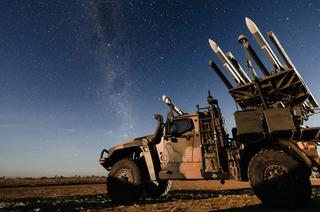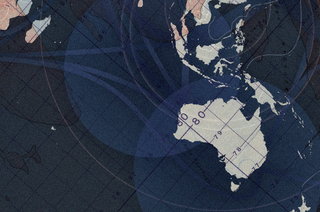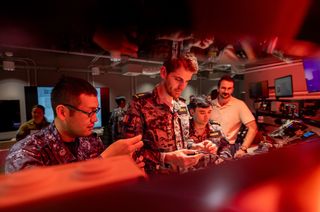Executive summary
The partnership between Australia and the Republic of Korea (ROK or South Korea) has emerged as a strategically promising component of the Indo-Pacific’s increasingly interconnected ‘spoke-to-spoke’ framework. The recent alignment of Australia and South Korea’s strategic outlooks offered a glimpse of what meaningful middle-power cooperation might look like. However, the political vacuum left by South Korean President Yoon Suk Yeol’s departure, following his declaration of martial law in December 2024 and later impeachment, has cast a shadow over the partnership’s future momentum. This is especially pertinent since the bilateral relationship has historically exhibited a pattern of intermittent and incremental progress, with windows of opportunity for deeper cooperation opening and closing, especially in the partnership’s security dimension. By comparison, where the US-ROK alliance’s spirit of katchi kapshida (“we go together”) has been forged in the face of ongoing provocations by North Korea, the Australia-ROK partnership has struggled to translate shared defence and foreign policy issues into a more sophisticated and sustained cooperative strategic agenda. Now, in light of recent domestic political challenges and abrupt leadership upheavals, the question must be asked: has the window for enhanced bilateral cooperation closed?
While the sirens of short-termism grow louder, it is the long-term imperatives that will provide the primary ballast in guiding policymakers in Canberra and Seoul towards achieving sustained and purposeful cooperation.
Drawing on engagements with over 90 South Korean and Australian defence and foreign policy experts, think tanks, current and former officials and diplomatic representatives and track 1.5 and 2 workshops in Seoul and Canberra, this report explores how enduring structural forces and transient political shocks are reshaping the contours of the Australia-ROK partnership.1 It contends that while the sirens of short-termism grow louder, it is the long-term imperatives that will provide the primary ballast in guiding policymakers in Canberra and Seoul towards achieving sustained and purposeful cooperation. As South Korea gears up for a presidential election in June 2025, the coming months will be a critical period to ensure the Australia-ROK partnership realises these factors shaping the relationship and can progress on sufficiently firm foundations for the next five years and beyond.
Recommendations
- Sustain diplomatic and political engagement: Given the importance of South Korea’s president in South Korean foreign policy decision-making, Australian officials in Canberra and Seoul will need to ensure that prominent South Korean political candidates — across the political spectrum — fully recognise the value of maintaining strong bilateral ties and that the relationship is, and will continue to be, of shared interest to both countries.
- Rapidly and proactively respond to protect the liberal international trading order: To counter potential economic disruptions from major powers, both countries should deepen regional economic ties. Australia should also encourage South Korea to formally join the Comprehensive and Progressive Agreement for Trans-Pacific Partnership (CPTPP), while ensuring that new economic engagements support their shared goals of diversifying supply chains and securing critical infrastructure.
- Enhance Australia-ROK defence cooperation in Southeast Asia: Where possible, deepen Australia-ROK cooperation in Southeast Asia. This should focus on deconfliction to enable both countries to capitalise on their respective defence and defence industrial strengths, especially South Korean shipbuilding. Australia can complement these efforts by investing in maritime capacity building and upgrading maritime infrastructure in key strategic locations.
- Maintain recent people-to-people ties to explore future security collaboration: Amid increased uncertainty, it is essential that both nations maintain momentum through their growing network of dialogue forums across the track 1, 1.5, and 2 levels to shape the future of their cooperation, particularly in the defence sphere. These forums will prove essential in navigating mutual short-term challenges and remaining focused on long-term structural issues.
Introduction
We are entering a period of uncertainty in the Australia-Republic of Korea (ROK or South Korea) strategic partnership. The most immediately significant event is the failed declaration of martial law in South Korea by President Yoon Suk Yeol, resulting in a constitutional crisis and his impeachment. Domestic political turmoil in the ROK is also corresponding with a rising tide and the seemingly frantic pace of disruptive international developments in both the Indo-Pacific and worldwide. In only a few short months, we have seen the pause and then the resumption of the conflict in Gaza; increased uncertainty over the conflict in Ukraine and the nature of peace negotiations; significantly increased Chinese maritime incursion across the line of control in the Taiwan strait and, in March 2025, China Coast Guard (CCG) patrol vessels entering the territorial waters of disputed islands located in the East China Sea between Japan and China for a record 92 hours and 8 minutes.2 The most impactful dynamic though has been the second Trump administration, which has implemented a radical reorientation of US policy on European security and the war in Ukraine, reshaped US soft power through the evisceration of USAID and initiated unprecedented global tariffs.3 This has left European security leaders scrambling while leaving allies and adversaries alike in a fog of uncertainty.
Uncertainty is occurring across multiple levels in international affairs, from regions and sub-regions to multilateral and bilateral relations. In the Indo-Pacific, the changing nature of regional power and its resulting impact on strategic reordering has generated long-term uncertainty. From many regional states, one of the key means of adapting to the emergence of a multipolar Indo-Pacific was to build deeper relations with close partners and fellow US allies; what Joe Biden’s national security advisor Jake Sullivan called a “latticework” of alliances and partnerships.4 Core to this latticework was a series of minilateral groupings, including the QUAD, AUKUS, and a revived and expanded US-ROK-Japan trilateral partnership. Underpinning this minilateral framework was deeper bilateral spoke-to-spoke cooperation, including the Australia-ROK relationship.
The Australia-ROK partnership has seen a flurry of activity in recent years — and an even bigger flurry of analysis. Since the establishment of a Comprehensive Strategic Partnership (CSP) in 2021, bilateral cooperation has proceeded around three key pillars: strategic and security cooperation; economic, innovation and technology cooperation; and people-to-people exchange and linkages.5 The great optimism about the future of the relationship has been driven by a number of tangible developments, including on defence issues, such as increased defence industrial collaboration, the alignment of regional strategies and the acceleration of bilateral defence exercises and engagement. Historically, however, the bilateral relationship has been marked by a pattern of intermittent and incremental progress, with windows of opportunity for deeper cooperation opening and closing, especially in the security dimension of the partnership. The election of President Yoon Suk Yeol in 2022 and the subsequent release of his administration’s 2022 Strategy for a Free, Peaceful, and Prosperous Indo-Pacific Region, 2022 Defense White Paper and 2023 National Security Strategy,6 appeared to herald “a critical window” for realising what “many analysts have long identified as the latent potential in the Australia-South Korea defence relationship.”7
It is imperative that the long-term impacts on the region remain the foundational lens through which to navigate the buffeting winds of immediate political crisis.
However, with both Australia and South Korea facing uncertainty at the domestic, regional and global level, there are fresh questions over the extent to which this window of opportunity may remain open, let alone whether leaders in either country will seek to seize a critical moment for bilateral relations. This report addresses how a range of long-term strategic changes in the Indo-Pacific, as well as more immediate political dynamics at play in South Korea, Australia, the United States, and the broader region, are influencing the art of the possible in the bilateral relationship. These are two forces that, at times, are at odds with each other. It is thus imperative that the long-term impacts on the region remain the foundational lens through which to navigate the buffeting winds of immediate political crisis.
The buffeting winds
Many analysts and commentators may look at the state of national politics in South Korea, especially since the declaration of martial law by President Yoon on 3 December 2024 that precipitated a constitutional crisis and his impeachment, and consider this a moment that imperils not just South Korea’s Indo-Pacific strategy but the range of relationships that underpin this strategy. To be sure, the long-term foreign policy implications of Yoon’s impeachment are yet to be determined, but the direction of the ROK’s regional strategy — of which Australia-ROK relations are a critical component — hangs in the balance. However, several other issues and factors are, cumulatively, posing other challenges to the future of the bilateral partnership, issues that have hitherto contributed to the Australia–ROK relationship’s sporadic, start-stop pattern of development.8
Defence industry
One of the most prominent areas is defence industrial cooperation. This is an area that has come to characterise the stop-start nature of Australia-ROK security cooperation over the last two decades. The most recent major setback was the decision to not down-select one of the two South Korean frigate bids for Australia’s SEA3000 project. Australia’s search for a new, in-service design, General Purpose Frigate off the back of the 2023 Defence Strategic Review and Independent Surface Fleet Analysis had originally included South Korea’s FFX Batch 2 (Daegu-class) and FFX Batch 3 (Chungnam-class) as “exemplars” for consideration, alongside Japan’s Mogami-class, Spain’s Alfa 3000, and Germany’s MEKO A-200.9 The down-select process settled on two designs: the Mogami-class and MEKO A-200. It is safe to say that the fact that neither Korean proposals reached the final round of tender came as a surprise to the two bidding South Korean firms, Hanwha Ocean and HD Hyundai Heavy Industries (HHI). Both companies had expressed confidence over their price point advantage over their competitors’ designs and their speed to capability advantages evidenced through their history and extensive expertise in shipbuilding. These critical capabilities were seen as potentially decisive advantages.10 However, the relatively short range of the South Korean frigates, their high crewing requirements and their limited interoperability with US Navy sensors and weapons — all of which were essential considerations for the Royal Australian Navy — were limitations for the South Korean bids.11 While not being selected for the final round was disappointing enough, hearing the news via a leaked story in the Australian media informing them of the success of their rival bidders was a major diplomatic failure by the Australian government.12
This disappointing news came after a series of diplomatic setbacks for South Korean efforts to secure the tender. In an endeavour to help support the frigate bid and bolster maritime relations, the South Korean Government appointed former ROK Minister of National Defense (2022-23), Lee Jong-sup, as Ambassador to Australia. However, Lee was forced to resign after only a month at post amid a corruption investigation.13 Rightly or wrongly, a lack of sustained and reliable high-level government support for the Hanwha Ocean and HII bids was viewed in South Korea as a substantial reason for the loss of the contract.14 In a recent court appearance President Yoon noted that:15
I sent former Defense Minister Lee Jong-sup as Ambassador to Australia to win a frigate order, but he resigned after being insulted. In the end, I couldn't win the [frigate] order due to a lack of high-level engagement.
The South Korean bid was also perceived to be hampered by the two South Korean shipbuilding competitors being engaged in protracted legal battles. This dispute flared up over the South Korean Navy’s next-generation destroyer project that included HHI employees being found guilty of stealing design data from Daewoo Shipbuilding & Marine Engineering, now Hanwha Ocean.16
The difficulties surrounding South Korea’s failed frigate bid are also reflective of broader issues in the attempts to accelerate the bilateral partnership. A decade prior to the failed bid, space cooperation was identified as a key frontier of the emerging bilateral partnership. Space cooperation was first recognised as a bilateral goal in the 2014 Vision Statement for a Secure, Peaceful, and Prosperous Future,17 while the 2015 Blueprint for Defence and Security Cooperation between Australia and South Korea also included “cyber security and space security” as a shared defence objective.18 However, space cooperation has since failed to truly launch. The subject was absent from Australia-ROK 2+2 meetings in 2017 and 2019,19 while references to space cooperation in the 2021 joint statement seemingly never progressed beyond vague statements. By the 2024 Australia-ROK 2+2 meeting, space cooperation had again dropped off the bilateral agenda.20 The key driver for this change appears to be due to policy shifts in Australia. The election of the Albanese government saw a dramatic, and still unexplained, drop in interest and investment from the Australian Government in space. In June 2023, the Albanese government terminated Australia’s first National Space Mission for Earth Observation (a program that was due to develop new Australian satellites to gather data on natural disasters, agriculture and marine surveillance) and it cut A$1.2 billion for critical space infrastructure development.21
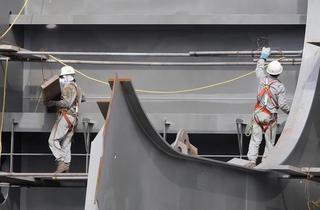
Defence industrial collaboration has also fallen victim to changed strategic circumstances, which have required a significant reorientation of Australia’s defence policy. Previously, Australia’s defence force structures were built around the concept of a ‘balanced force,’ distributing funding relatively equally across all three armed services, with each focused on mission sets based on a range of possible contingencies, rather than any specifically identified threat. However, the advent of the 2023 Defence Strategic Review (DSR) resulted in a reorientation of Australia’s defence force to a strategy of deterrence by denial in the Indo-Pacific and the introduction of a ‘focused force’ designed to operate in Australia’s near region in the face of major power war. The DSR and subsequent 2024 National Defence Strategy (NDS) make it clear that the risk of a war between China and the United States in the region is the clear organising principle for the Australian Defence Force.22
This force structure reorientation resulted in major changes to the force design principles across the ADF and to the Australian Army in particular. The Army’s previous force structure plans had been based around the development of medium-weight mechanised combined arms fighting brigades, the hub of which was new self-propelled artillery delivered by Hanwha and a new Infantry Fighting Vehicle (IFV), whose design was also won by Hanwha in 2023.23 For South Korea, Australia’s decision to choose Hanwha over Germany's Rheinmetall was not only seen as indicative of South Korea’s growing defence industrial capabilities vis-à-vis Australia’s longstanding relationships with European and American defence industrial providers, but also a reflection of the developing Australia-ROK relationship more broadly.24 As Son Jaeil, president and CEO of Hanwha Aerospace (parent company of Hanwha Defence Australia), noted in late 2023, “Hanwha’s selection as preferred tenderer for the Land 400, Phase 3 Project, has major implications for Korea-Australia defence and economic cooperation.”25 However the change of the Army force structure to a new focus on littoral warfare, sea denial and archipelagic manoeuvre saw the second regiment of the Hanwha self-propelled howitzer program cancelled by the DSR and the scaling back of the IFV program from 450 vehicles to 129. The savings from these programs were ultimately reinvested in littoral watercraft and long-range land-based surface-to-surface and anti-ship missiles.26
The impact of these decisions is a reminder that the defence industry is a highly competitive marketplace and that, certainly in Australia’s case, capability decisions are based on national interests, strategy and force design principles, rather than bilateral partnership building.
Such setbacks were not unprecedented for the Australia-ROK defence industry relationship. Australia had previously cancelled major defence contracts after strategic reviews. In a 2012 decision, the Australian Government scrapped the original A$1 billion order for self-propelled howitzers (SPH) from Samsung Techwin (now Hanwha Defense).27 Like the 2023 decision, this was based on Australia’s strategic shift toward maritime defence in response to rising security challenges in Asia. According to former Australian Ambassador to the ROK Bill Paterson, the abrupt cancellation of the project was badly received by South Korea, which saw Australia as an unreliable partner, in a country where “long-term trusted relationships define the business culture, this was a particularly damaging decision.”28 This is especially important given that successive South Korean leaders have, as Dr Peter K. Lee highlights, viewed high-profile defence industrial exports and agreements as a primary avenue for developing South Korea’s international partnerships and enhancing its national prestige in ways its other exports struggle to compare with.29 This highlights a particular cultural difference in the relationships. The impact of these decisions is a reminder that the defence industry is a highly competitive marketplace and that, certainly in Australia’s case, capability decisions are based on national interests, strategy and force design principles, rather than bilateral partnership building.
South Korean domestic politics and foreign policy
While defence industry decisions are only one major contract away from being seen as ‘back on track,’ recent developments in South Korean domestic politics stand to have a much broader impact on Seoul’s foreign policy, including its bilateral relationship with Canberra. Indeed, while South Korea’s 1987 Constitution granted its National Assembly and judiciary greater independence, foreign policy decision-making has ultimately remained the prerogative of the presidency and bureaucratic spheres.30 Experts such as Andrew Yeo and Jeffrey Robertson had raised concerns that momentum in Seoul’s foreign policy efforts could stall after Yoon’s conservative party, the People Power Party (PPP), only won 108 of 300 seats in the April 2024 parliamentary elections.31 With a weakened position in the National Assembly, Yoon was forced to prioritise greater attention to domestic legislation over foreign policy initiatives. In addition, differences in foreign policy objectives and approaches between the Yoon administration and the opposition were cited as a contentious partisan issue during Seoul’s recent political crisis. For example, the initial impeachment motion filed by progressive opposition parties in early December 2024 claimed that Yoon’s foreign and national security policies had isolated the ROK in East Asia by antagonising North Korea, China, and Russia while currying favour with Japan through the Yoon administration’s “value diplomacy” approach to foreign affairs.32 The references to foreign policy were ultimately omitted in the final version of the second impeachment motion, allegedly after US diplomats raised concerns.33
South Korea’s domestic political turmoil underscored that partisan differences at home would continue to significantly impact its foreign policy agenda. Before South Korea’s Constitutional Court announced it upheld Yoon’s impeachment, polling from the National Barometer Survey found 48% of South Koreans supported an opposition candidate in the next presidential election, compared to 41% support for the ruling party.34 More recent polling indicates that Lee Jae-myung, leader of the main opposition Democratic Party of Korea (DPK), is the South Korean public’s most favoured candidate for the snap presidential election.35 The DPK leader only narrowly missed winning the ROK’s 2022 presidential election by a margin of 0.7%.36
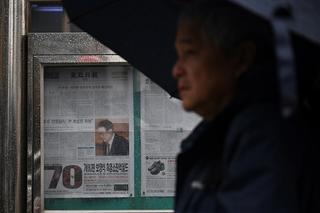
If a progressive leader assumes power in June 2025, the Australia-South Korea partnership, like many of the ROK’s bilateral relationships, will likely need to navigate a new political and strategic outlook in Seoul. Such a change may well see a reversal of Yoon’s rapprochement with Japan and put pressure on the US-ROK-Japan trilateral partnership, as some members of the progressive opposition, including Lee Jae-myung, have criticised Yoon’s drive for closer relations with Japan, describing one 2023 bilateral summit as the “most humiliating and dreadful moment in the history of [ROK] diplomacy.”37 While Lee is reported to have since told the Japanese Ambassador to the ROK that managing relations with Japan and advancing US-ROK-Japan trilateral cooperation are “critical tasks,” a progressive administration could well spell a much more cautious approach to South Korean participation in Indo-Pacific security.38 These relationships are important to Australia as they underpin Australia’s desire for regional cooperation amongst like-minded states to preserve the remnants of the liberal international order and, most significantly, maintain a regional strategic balance. A positive Japan-ROK relationship is fundamentally important to Australian interests in Northeast Asia.
The Trump factor
The return of Donald Trump to the White House adds another wild card into the bilateral partnership. This extends beyond the mercurial nature of the US president. During President Trump’s first term, he undertook an unconventional relationship with North Korea’s leader, Kim Jong-un. This ranged from “fire and fury” threats, with Trump’s national security team voicing concerns that the United States might have neared nuclear war with North Korea amid heightened tensions in 2017, to the 27 “love letters” Trump exchanged with Kim thereafter.39 Despite an auspicious start to their relationship, Trump and Kim convened two leader-level summits — one in Singapore in June 2018, and the other in Hanoi in February 2019 — to reach an agreement on advancing North Korea’s denuclearisation. This was then followed by a brief engagement between the two leaders in June 2019 at the demilitarised zone separating the two Koreas in Panmunjom, and saw Trump become the first sitting US president to set foot in North Korea. Beyond attracting extensive media coverage, these efforts failed to amount to any substantive progress in North Korea’s denuclearisation, with US and DPRK negotiators unable to bridge differences over how they defined ‘complete, verifiable, irreversible denuclearisation’ (CVID) — a key and longstanding US demand.40
Relations with the DPRK are also back on the agenda for the second Trump administration. Although so far rather muted, one of the major concerns for South Korea is the Trump administration’s seeming legitimation of the DPRK’s nuclear program. In January 2025, while signing a series of executive orders in the Oval Office, Trump said “Now, he [Kim Jong Un] is a nuclear power…I think he’ll be happy to see I’m coming back.”41 Defense Secretary Pete Hegseth also appeared to legitimise North Korea’s illegal nuclear weapons program by referring to the DPRK as a “nuclear power” during his Senate confirmation hearing, a phrase US officials have long refrained from using as it could signal formal recognition of North Korea as a nuclear-armed state.42 The vacillations and unpredictability of the Trump administration were made more evident when his National Security Council spokesman, Brian Hughes, said in a statement sent to Kyodo News that Trump “will pursue the complete denuclearization of North Korea, just as he did in his first term.”43 The US approach to the DPRK is a central concern to regional security. US approaches to the DPRK’s nuclear status are of clear interest to Australian policy makers and their approach to regional non-proliferation. However, it has been argued that Australia’s lack of influence on North Korea is an example of the divergence of Australian-ROK strategic interests regarding China that could also be a point of tension or limitation in the bilateral relationship.44
While the second Trump administration’s policy towards the Indo-Pacific remains relatively unknown, it has so far shown disdain for US allies that the administration perceives as free-riding off of US security guarantees. This does not bode well for South Korea, which was a target of similar accusations during the first Trump administration
While the second Trump administration’s policy towards the Indo-Pacific remains relatively unknown, it has so far shown disdain for US allies that the administration perceives as free-riding off of US security guarantees. This does not bode well for South Korea, which was a target of similar accusations during the first Trump administration. One review of publicly available statements by Trump since the 1990s on alliances and US military deployments abroad reveals that the US president has consistently opposed the stationing of US troops in South Korea.45 Trump has constantly raised the cost of stationing US troops on the peninsula as a problem, and although the actual amount fluctuates, the US Government’s Accountability Office estimated their presence to cost around US$13.4 billion from 2016 to 2019, equating to an average of US$3.5 billion per year, of which the ROK government currently pays approximately US$1 billion in burden-sharing payments.46 During the first Trump administration, the president questioned the US$2 billion deficit and, while on the campaign trail in the leadup to the 2024 US presidential election, named Seoul a “money machine” capable of paying US$10 billion a year to station US forces on the ROK’s territory.47 President Trump has also supposedly indicated to close aides that he would “blow up” the US-ROK alliance in his second term as president.48
South Korea’s nuclear latency
While President Trump’s mercurial nature and outlandish statements may generate sympathy or even drive possible closer ties between Seoul and Canberra, there is one key area of major risk — the role of nuclear deterrence on the Korean Peninsula, and the possibility of a South Korean nuclear armament. Both President Trump and US Under Secretary of Defense for Policy Elbridge Colby have indicated a willingness to tolerate a nuclear-armed South Korea, either to free US defence resources for strategic competition with China or because the ROK’s acquisition of an independent nuclear weapons capability is, as Trump put it, “going to happen anyway.”49 In February 2025, Trump officials and their South Korean counterparts agreed to begin using the expression, “denuclearisation of North Korea,” instead of the longstanding phrase, “denuclearisation of the Korean Peninsula.”50 This suggests that US strategic interests in the Indo-Pacific or efforts to advance North Korea’s denuclearisation do not rule out the possibility of South Korea developing its own nuclear weapons program or hosting US tactical nuclear assets on its territory.
These are significant developments given that calls for indigenous nuclear armament in South Korea have been growing since well before Trump took office. Public opinion polls show that since at least the 2010s, a majority of South Koreans have consistently supported the development of an independent nuclear weapons arsenal (often over 70%) or the reintroduction of US tactical nuclear weapons to the peninsula.51 While South Korean conservatives have historically been the most vocal advocates for nuclear armament compared to progressives, this does not necessarily mean Seoul’s nuclear ambitions will diminish over the next five years should a progressive administration take power.
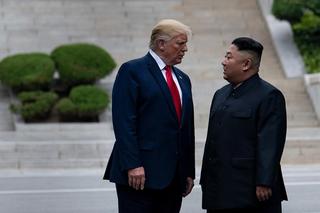
Indeed, previous progressive leaders, such as Moon Jae-in, have strived to develop South Korea’s nuclear latency, if needed, but stopped short of outright nuclear armament.52 Former Minister for Unification and a close advisor to Lee Jae-myung, Lee Jong-seok, recently wrote in the progressive Kyunghyang Shinmun that South Korea’s nuclear latency can be achieved within the framework of the Nuclear Non-Proliferation Treaty (NPT) and with the consent of the United States, in an effort to address the deteriorating neighbouring strategic environment.53 Measures often cited to sophisticate a state’s nuclear latency include, among others, the development of delivery systems, like submarine-launched ballistic missiles (SLBMs); enhancing in-country expertise (or tactical knowledge); or ability to reprocess spent fuel from power reactors to extract bomb-grade plutonium or, alternatively, the capacity to enrich uranium, potentially up to bomb-grade levels.54 As such, the arrival of the second Trump administration may add fuel to the fire of those voices calling for a South Korean nuclear deterrent, regardless of which South Korean leader succeeds President Yoon.
Australia holds a strong position in the nuclear non-proliferation and disarmament regime, which includes monitoring and regulating the military and civilian use of nuclear material. Given Australia’s abundant supply of uranium reserves and export potential, Canberra’s historic commitment to ensuring member states of the Nuclear Suppliers Group and signatories to the NPT adhere to strict nuclear safeguards and promote nuclear disarmament is, as Cathy Moloney underscores, held in especially high regard both at home and abroad.55 A South Korean Government that is strongly intent on acquiring nuclear weapons would, therefore, likely raise considerable challenges for the bilateral partnership, as Canberra would worry that such moves could encourage nuclear proliferation elsewhere in the region.56 Additionally, though the forward positioning of US nuclear assets to South Korea would not constitute a violation of the NPT, Australia would remain apprehensive that their presence could lower the threshold of regional nuclear use and raise the prospects that, should a conflict in Northeast Asia break out, an adversary could consider horizontal escalation and strike US bases and defence assets in Australia which would likely be activated during such a contingency.57 Therefore, the issue of South Korea’s nuclearisation, while still remote, has the potential to drive a significant wedge in the Australia-ROK bilateral relationship.
Altogether, these issues point to a potential period of buffeting winds in the Australia-ROK relationship. Rather than focusing on ways to ‘turbo charge’ the partnership, the current status and direction of the bilateral relationship call for a pragmatic refocus centred on shared strategic interests and the essential measures needed to sustain existing levels of bilateral engagement. At the same time, both Canberra and Seoul should identify practical opportunities that can deliver the greatest mutual benefit and are within practical reach for them to achieve amid ongoing uncertainty and disruption.
Underpinning cooperation: The changing strategic order of the Indo-Pacific
While the factors outlined above might be considered headwinds to the bilateral relationship, they also occur in an increasingly contested regional strategic environment in the Indo-Pacific. Donald Trump, Xi Jinping and other world leaders may have a major influence on the conduct of world affairs, but overwhelmingly they are reacting to, or gripping up, the overriding structural factors that impact the strategic order of the Indo-Pacific. The most important structural realignment has been the relative decline of US power, and the rise of China, India and other regional states. The emergence of a multipolar order in the Indo-Pacific is a key factor driving regional leadership dynamics and political developments. As Henry Kissinger remarked “Trump may be one of those figures in history who appears from time to time to mark the end of an era and to force it to give up its old pretences…[but] It doesn't necessarily mean that he knows this, or that he is considering any great alternative.”58
What is clear is that the People’s Republic of China (PRC), particularly since Xi’s first term as president, has been bold in its attempts to shape the emergence of this new Indo-Pacific strategic order. Xi has been forthright in striving to establish the PRC as the dominant regional power, attempting to undermine US power as the region transforms from US hegemony to multipolarity. The PRC’s massive increase in its military capabilities as part of this transformation has been well documented.59 The expansion of China’s People’s Liberation Army (PLA) conventional capabilities is reshaping the military balance in the Indo-Pacific.
One of the more underappreciated and rapidly emerging challenges for the United States and its allies and their ability to maintain deterrence and stability in the Indo-Pacific is China’s nuclear build-up. The US Department of Defense estimates that China already possesses around 500 operational nuclear warheads.60 In recent years, it has started the largest expansion of a nuclear arsenal by any state since the early Cold War period. It plans to increase its nuclear weapons stockpiles to have 1000 warheads by 2030 and 1500 by 2035.61 Although the United States still possesses over 3,700 nuclear warheads, its stockpile has steadily reduced over time, with 12,088 nuclear warheads dismantled between 1994-2023.62 An additional 2000 nuclear warheads have retired and are currently awaiting dismantlement. The number of US tactical nuclear weapons has also declined by more than 90% since September 1991.63
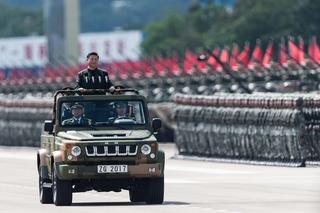
The rapid expansion of the PRC’s military capabilities is most evident in the massive growth in the size of its navy. Beijing now operates the world’s largest navy in numerical terms, with an overall battle force of over 370 ships and submarines, including more than 140 major surface combatants.64 These forces are overwhelmingly concentrated in East Asia, in contrast to the requirement for the United States Navy (USN) to maintain a global presence. Additionally, in order to counteract the US military’s global force projection capabilities, the PLA is also fielding an increasingly sophisticated missile inventory, including ground-launched cruise missiles like the DH-10 and DF-100 with ranges of approximately 1,500 and 2,000 kilometres, respectively.65 These weapons have been specifically developed in an endeavour to limit the freedom of action of the USN in the western Pacific.
The PRC has used its growing military power in tandem with exceptional economic power to coerce states in the region. Recently, the PRC’s attempts to undermine the US-led international order have been furthered by enhancing ties with the two most active states contesting the rules-based international order: Russia and North Korea. In 2022, Xi Jinping and Russian President Vladimir Putin established what they described as a “no limits” partnership between China and Russia.66 In 2024, Putin went so far as to refer to the partnership in terms of a strategic alliance: “The People's Republic of China and the Russian Federation are allies in every sense of the word.”67
Since Russia’s illegal invasion of Ukraine, Chinese exports have become a lifeline for the Russian economy, especially after the United States and European countries sanctioned Russian resources and froze Russian assets. In 2023, official China-Russia trade reached an all-time high of US$240 billion, compared to their prewar bilateral trade of US$147 billion in 2021.68 China continues to supply Russia with dual-use industrial inputs, including microelectronics, military optics, drone and turbojet engines, armoured vehicles, satellite technology, and key raw materials.69 This has been backstopped by an increasingly close Russia-DPRK relationship which includes diplomatic, economic and military support. From August 2023, the DPRK began to supply the Russian army with large quantities of artillery shells and ammunition.70 This was followed by a Treaty of Comprehensive Strategic Partnership (CSP).
The DPRK-Russia CSP represents the most significant and far-reaching agreement between the two states in the post-Cold War period, pledging to increase cooperation over a wide array of security, political and economic issues. Under Article 4 of the treaty, both countries commit to “provide military and other assistance” in response to “an armed invasion from an individual state or several states,” sounding reminiscent of the type of language used in mutual defence pacts.71 Indeed, this agreement saw the subsequent deployment of DPRK troops fighting in Ukraine for Russia, representing North Korea’s first combat experience since the Korean War. Recent reports that over 150 Chinese citizens have also been fighting on Russia’s behalf further underscore the growing interconnectedness between Indo-Pacific and Euro-Atlantic security dynamics — developments that carry significant implications for both Australia and South Korea’s regional defence and strategic interests.72
Irrespective of barriers and short-term setbacks in the bilateral partnership, the large structural factors reshaping the Indo-Pacific means that bilateral and minilateral partnerships with like-minded states are key to the preservation of a regional strategic balance.
This alignment of autocracies is, as US historian Anne Applebaum has stated, driven not by ideology but “by a ruthless, single-minded determination to preserve their personal wealth and power.”73 This quest for power at the state level is driven by their focus on undermining the foundations of US power and global order. Their aggressive attempts to undermine the international order and, in the PRC’s case, to re-order the Indo-Pacific contravenes the key tenants of both Australia and the ROK’s strategic interests. Irrespective of barriers and short-term setbacks in the bilateral partnership, the large structural factors reshaping the Indo-Pacific means that bilateral and minilateral partnerships with like-minded states are key to the preservation of a regional strategic balance.
None of these developments mentioned above support stability in the Indo-Pacific or the preservation of a regional order that supports South Korea or Australia’s strategic interests. While Australia’s agency regarding the DPRK may be limited, there is a shared sense of risk to regional security posed by the DPRK in South Korea and Australia. Recent developments in the bilateral security relationship have, however, been focused more broadly on security issues beyond the Korean Peninsula. A change of government in South Korea may shift this focus, but it does not and cannot change the relative importance of the emergence of a multipolar regional order that has driven increased security cooperation, including increased joint military exercises. This is something that any new government in Seoul must form an effective framework to address. The limits of South Korea’s strategic power and agency in the region mean that allies and partners will remain key to preserving South Korean strategic interests. This provides a platform for maintaining the enormous progress of recent years and for continued cooperation.
The other key factor in maintaining a regional strategic balance is the continued engagement of the United States in the region. Despite tension in the US-European relationship and the obvious disdain by Trump and some of his senior officials towards some US allies, Washington’s initial signs in the Indo-Pacific are mixed. While the reshaping and limitation of US soft power engagement globally is a major blow for strategic competition with China in the Indo-Pacific, the initial signs of broader hard-power engagement with the region have been promising.74 The early meetings of the Quad foreign ministers at President Trump’s inauguration and cabinet-level meetings with the US-ROK-Japan trilateral were early signs of prioritisation of the region in the new administration.75 The US-Japan and the US-India leaders meetings were both exceptionally positive, as was the signalling of strong support for AUKUS.76 This was backed up by a series of engagements by Secretary of Defense, Pete Hegseth, to Hawaii, the Philippines and Japan in late March 2025.77
However, the unpredictable nature of President Trump and his team means that a sense of unease over US policies and potential demands on allies and partners in the region remain. Trump’s team have called for increased defence spending among its regional partners, including 10% of GDP in Taiwan’s case and 3% in Australia’s, albeit primarily in the context of counter-balancing China’s regional military build-up.78 While it is well-known that Trump has consistently raised the issue of burden-sharing with South Korea, it should not go unnoticed that US Defense Undersecretary for Policy Elbridge Colby has recently described the ROK’s defence spending and burden-sharing contributions as a “reliable model” that is “doing its part” more than some other US allies.79 Indeed, the Pentagon’s interim strategic guidance calls for the United States to prioritise requirements in the Indo-Pacific with a specific focus on China as the pacing threat and, importantly, a Chinese invasion of Taiwan as the sole conflict scenario around which defence resourcing decisions should be made.80 By contrast, a lack of clarity on the United States’ DPRK policy, uncertainty over US demands towards its allies and partners, and growing perceptions of Washington’s unreliability all cloud US policy in the region. As two of the closest US allies in Asia, South Korea and Australia have a shared interest in shaping US policy. More so than at any time in the past, this demands a continuation of sustained spoke-to-spoke cooperation and closer coordination and engagement. With proactive political leadership, these developments can also create greater incentives and more strategic space to work bilaterally to support defence industrial development and diplomatic engagement in the region.
One of the most significant uniting factors for South Korea and Australia has been shared interests in a liberal economic order. As trade-dependent exporting states, the preservation of maritime security in the region and the continuation of free and fair-trading practices are key to both states’ interests. South Korea’s Indo-Pacific strategy notes that its trade dependency is a key factor in framing its strategic approach towards the region, with the Indo-Pacific representing “78 percent of total exports and 67 percent of total imports to South Korea, two-thirds of South Korea’s foreign investments is directed to the Indo-Pacific, and 64 percent of South Korea’s inbound crude oil and 46 percent of inbound natural gas supplies pass through the South China Sea.”81 Similarly, Australia has emphasised its identity as a trade-dependent maritime nation and on the need to uphold a rules-based international order that can uphold its economic interests. Asia and the Pacific account for 75% of Australia’s trade in goods and services, with about 99% of Australia’s total trade volume depending on sea routes for transportation and representing 79% by value alone.82 Trade, and especially maritime trade, for Australia and Korea, therefore, represents a critical economic lifeblood for the two countries. As a result, both Australia and South Korea have sought to deepen their economic partnerships across the region in addition to their longstanding membership to global institutions such as the World Trade Organization (WTO) and the World Bank Group. This includes, among others, the Indo-Pacific Economic Framework (IPEF), Regional Comprehensive Economic Framework (RCEP), and Asia-Pacific Economic Cooperation (APEC), with the ROK hosting this year’s APEC summit in Gyeongju.
In this respect, the assault on free trade by the Trump administration is of major concern to both states. The formula for Trump’s “Liberation Day” so-called ‘reciprocal tariffs’– were, in fact, not reciprocal but based on trade deficits — meaning that the United States levied a 25% tariff on South Korea, which was much higher than Australia’s 10% tariff (due to a trade deficit with the United States) and higher still than Japan (24%) and the European Union (20%), despite having a bigger trade deficit with Japan and the EU than with South Korea.83 A day before the announcement, South Korea's acting President, Han Duck-soo, ordered emergency support measures for businesses that will be impacted by the imposition of US tariffs, including automobiles.84 Despite Trump’s announcement of a pause in these tariff measures after major drops in the US stock and bond markets he has escalated the trade war with the PRC.
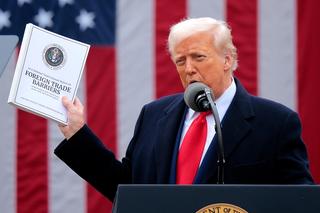
Strongly resisting trade wars and the rise of protectionism is a key mutual strategic interest that requires urgent and creative diplomacy. The imposition of US global tariffs creates an opportunity for Australia-ROK bilateral economic cooperation. According to the latest data by the Australian Bureau of Statistics for 2023, South Korea was Australia’s fourth-largest trading partner valued at A$70.9 billion, and Australia’s third-largest export market at A$43.6 billion.85 More significantly, South Korea has been among Australia’s top trading partners for almost 40 years. The 2014 Korea-Australia Free Trade Agreement saw two-way trade more than double over the past decade.86 The US imposition of tariffs should serve as a springboard for action for facilitating and encouraging South Korea’s formal ascension into the Comprehensive and Progressive Agreement for Trans-Pacific Partnership (CPTPP), especially as Australia chairs this body in 2025.87 Australia should also work with South Korea to look for other ways to maximise two-way trade but also in exploring smaller selection trade blocks on key areas of mutual interest and cooperation.
The emerging array of minilateral groupings in the Indo-Pacific offer a promising avenue for broader economic and strategic cooperation between South Korea and Australia. Minilateral engagement and diplomacy has become a driving force for Australian integrated statecraft in recent years. Yet many of the key groupings, such as AUKUS, the Quad and the Australia-Japan-US (AJUS) trilateral partnership lack South Korean involvement. Now economic minilateral cooperation is an area worth exploring in the face of rising US protectionism. One of the first areas to explore is minilateral cooperation on critical minerals. There are key national security and economic alignments between South Korea, Australia, Japan and Taiwan on this issue. Such cooperation could be undertaken with or without the United States.
While security has been the dominant dynamic in recent years, economic and trade cooperation should be a key focus of the bilateral partnership in the near term.
Indeed, against the looming backdrop of the Trump administration’s tariffs in March 2025, South Korea indicated its strong interest in bolstering regional trade when its trade minister met with Chinese and Japanese counterparts to hold their first trilateral economic dialogue in five years and discuss the possibility of reaching a trilateral free trade agreement to promote “regional and global trade” days before Trump’s tariffs took effect.88 Given other areas of existing potential cooperation — including diversification and supply chain resilience, regulatory controls, critical and emerging technologies, and engaging business communities to improve mutual risk analyses — it is viable, if not imperative, for South Korea to work with close strategic partners like Australia to further this expansive agenda.89 While security has been the dominant dynamic in recent years, economic and trade cooperation should be a key focus of the bilateral partnership in the near term.
Recommendations
As Australia and South Korea enter a period of significant uncertainty at home, including general elections, and a shared deteriorating strategic environment abroad, it will be critical for Canberra and Seoul to focus their efforts on existing areas of cooperation that are in practical reach and can deliver maximum impact. These include:
1. Sustain diplomatic and political engagement
The South Korean Constitutional Court’s decision on President Yoon’s impeachment has brought an end to nearly four months of political uncertainty in Seoul. As South Korea prepares for a presidential election in June, Australian officials in Canberra and Seoul will need to ensure that prominent South Korean political candidates across the political spectrum fully recognise the value of maintaining strong bilateral ties between Australia and South Korea. Although the conservative Yoon administration certainly fostered notable alignment with Australia in its defence and strategic outlooks, it will nevertheless remain important for Australian officials to stress that sustaining the partnership is, and has been, a cross-party interest in both countries. The Australia-ROK relationship has made meaningful progress under both sides of ROK politics, including the launch of the Comprehensive Strategic Partnership in 2021 during the progressive Moon administration. Given the importance of the president in South Korean foreign policy decision-making, the coming months will be crucial in safeguarding Australia’s position as a key strategic partner to South Korea for the next five years.
Given the importance of the president in South Korean foreign policy decision-making, the coming months will be crucial in safeguarding Australia’s position as a key strategic partner to South Korea for the next five years.
2. Rapidly and proactively respond to protect the liberal international trading order
As trade-dependent economies, maintaining a liberal international trading order is essential to Australia and South Korea’s economic prosperity. The two nations should continue to strengthen their engagement in regional and global economic institutions. In particular, Australia should use its position as chair to encourage South Korea to formally join the Comprehensive and Progressive Agreement for Trans-Pacific Partnership, having first announced its intention to join as far back as December 2021. While Australian officials should remain sensitive to South Korean concerns — especially under a potential progressive South Korean administration — that joining the CPTPP could effectively create a “de facto FTA between Korea and Japan,” they should underscore the fact that broader, systemic threats to the international trading order demand a more coordinated front from trading nations like South Korea and Australia to safeguard its foundations.90 As part of this effort, South Korea and Australia should show regional leadership and explore minilateral economic groups on a range of issues that support the liberal trade agenda, including critical minerals, energy security and supply chain resilience.
South Korea’s recent efforts to engage with both Japan and China on a possible trilateral free trade agreement suggests that sustaining regional trade remains an important priority for Seoul. However, Canberra should emphasise to Seoul that these efforts do not conflict with parallel initiatives to diversify supply chains and critical infrastructure — particularly in light of China’s imposition of trade sanctions and other geoeconomic pressures on the two countries. As comprehensive strategic partners, Australia and South Korea (and a shared membership in institutions like the CPTPP) have a valuable opportunity to help safeguard the economic order against future instability in Washington and Beijing’s economic decision-making.
3. A New Southern Policy redux? Australia-ROK defence cooperation in Southeast Asia
For the next South Korean administration, and particularly a progressive one, recent aspirations for Seoul to play a more pronounced role in the Indo-Pacific security may be slimmed down, especially if the strategic environment in Northeast Asia increasingly deteriorates and demands a reorientation of South Korean resources closer to home. Still, there remains an important potential for collaboration between South Korea and Australia in supporting regional stability, particularly in Southeast Asia, where both countries have demonstrated a shared and bipartisan interest in bolstering regional partners’ security and deterrence capabilities.91
This is critical given that recent increases in US-led freedom of navigation operations to challenge China’s maritime claims still lack the consistent, year-round presence required for sustained deterrence.92 Southeast Asian nations also face a vast imbalance in both the number and sophistication of their naval vessels compared to China, often relying on outdated or second-hand ships acquired through ad-hoc arrangements. If a future South Korean administration includes a New Southern Policy (NSP)-style approach in its regional strategy, aligning it closely with Australia offers a strategically valuable partnership to avoid duplication of resources and allows regional partners the capacity to better absorb South Korean and Australian military aid and capacity-building initiatives.
South Korea’s shipbuilding expertise, known for its efficiency and cost-effectiveness, offers a practical advantage. South Korea has already set an encouraging precedent by securing a contract to build six offshore patrol vessels for the Philippine Navy.93 With Australia’s vessel production operating at full capacity, Canberra can complement South Korea’s shipbuilding contributions by investing in regional capacity building, and support for enhancing regional maritime infrastructure located in strategic locations.
4. Maintain recent people-to-people ties to explore future security collaboration
As Australia and South Korea enter a period of uncertainty, it is essential that both nations maintain momentum through their robust network of dialogue forums across Track 1, 1.5, and 2 levels to shape the future of their cooperation. In 2024, several milestones marked this important engagement. These included the signing of an MOU between the Korea National Defense University and the Australian Defence Force Training Centre during the ROK-Australia 2+2 meeting, and security dialogues such as the inaugural ‘ROK-AUS Defence Conference’ in Canberra in July, the ‘ADM Australia-Korea Defence Congress’ in Seoul in September, and the ‘Australia-ROK Dialogue on Security Cooperation,’ co-hosted by the ROK Embassy in Canberra and the United States Studies Centre, in Canberra in November.94
These forums focused on assessing the evolving regional security landscape, reviewing the state of the strategic partnership, and exploring opportunities to deepen defence industry collaboration. It will remain vital that these dialogue mechanisms remain active as the strategic environment becomes increasingly volatile. These forums will continue to serve as key platforms in navigating mutual short-term challenges and long-term structural issues, continuously helping identify where bilateral cooperation between Australia and South Korea is most viable and impactful.
